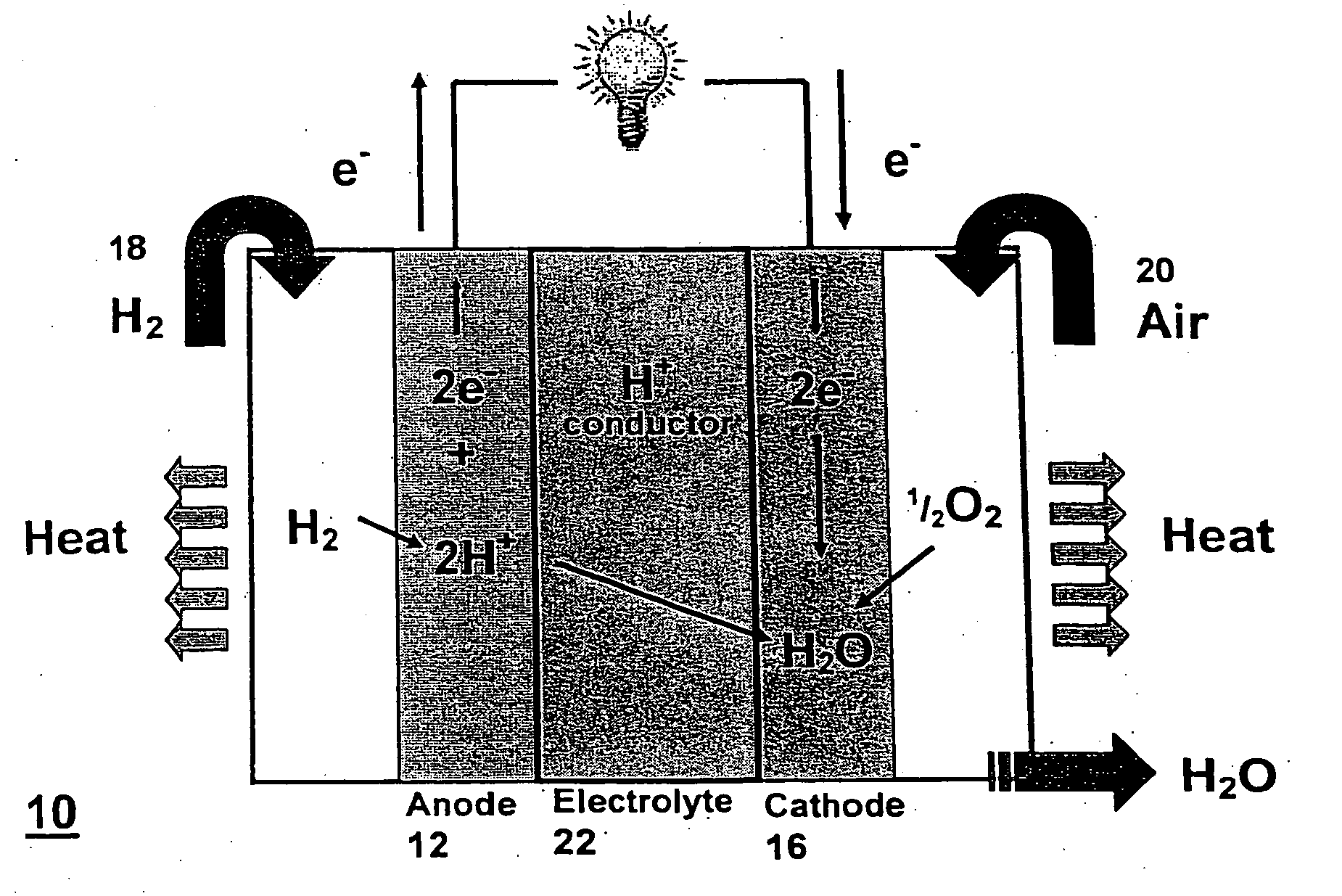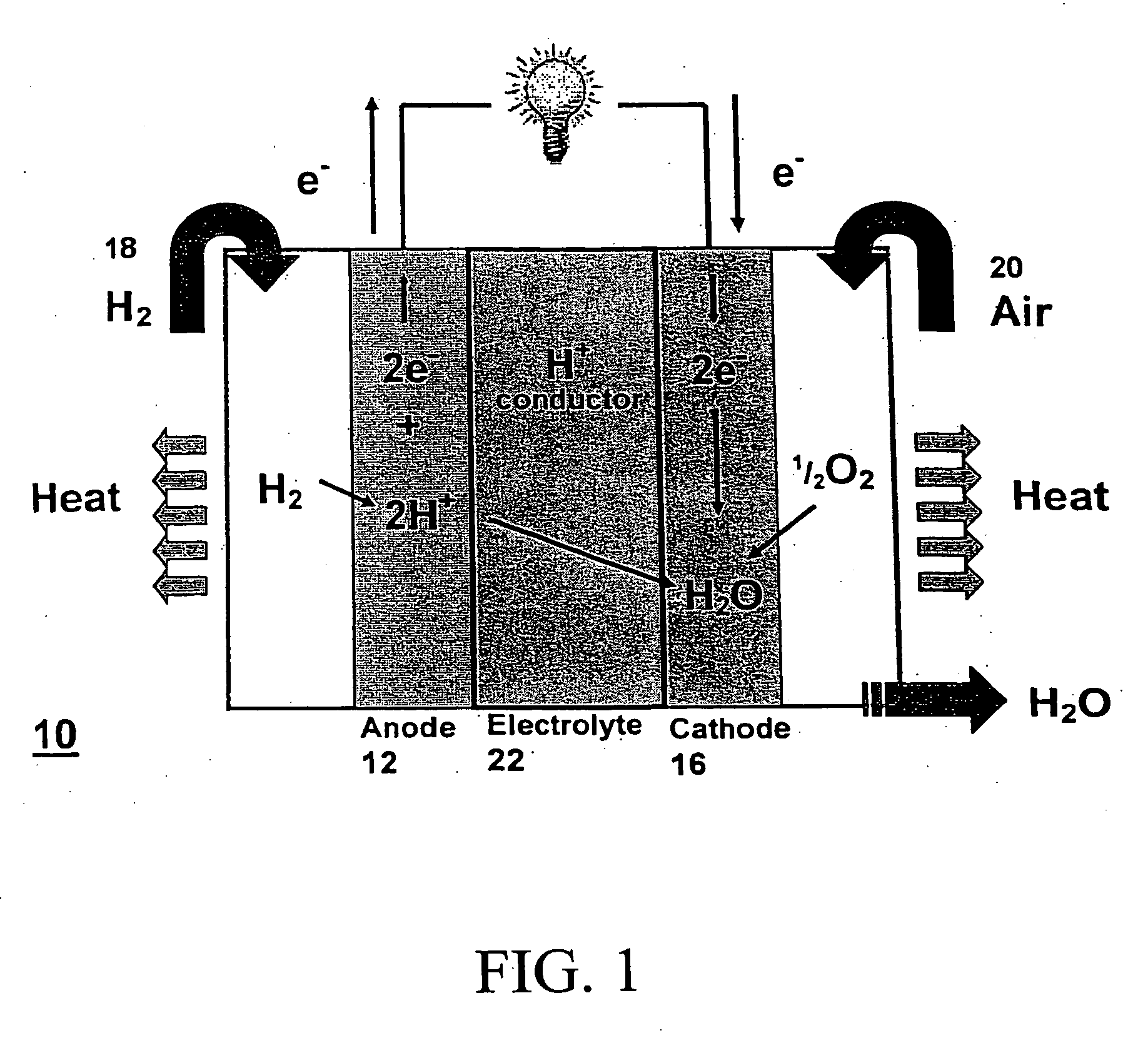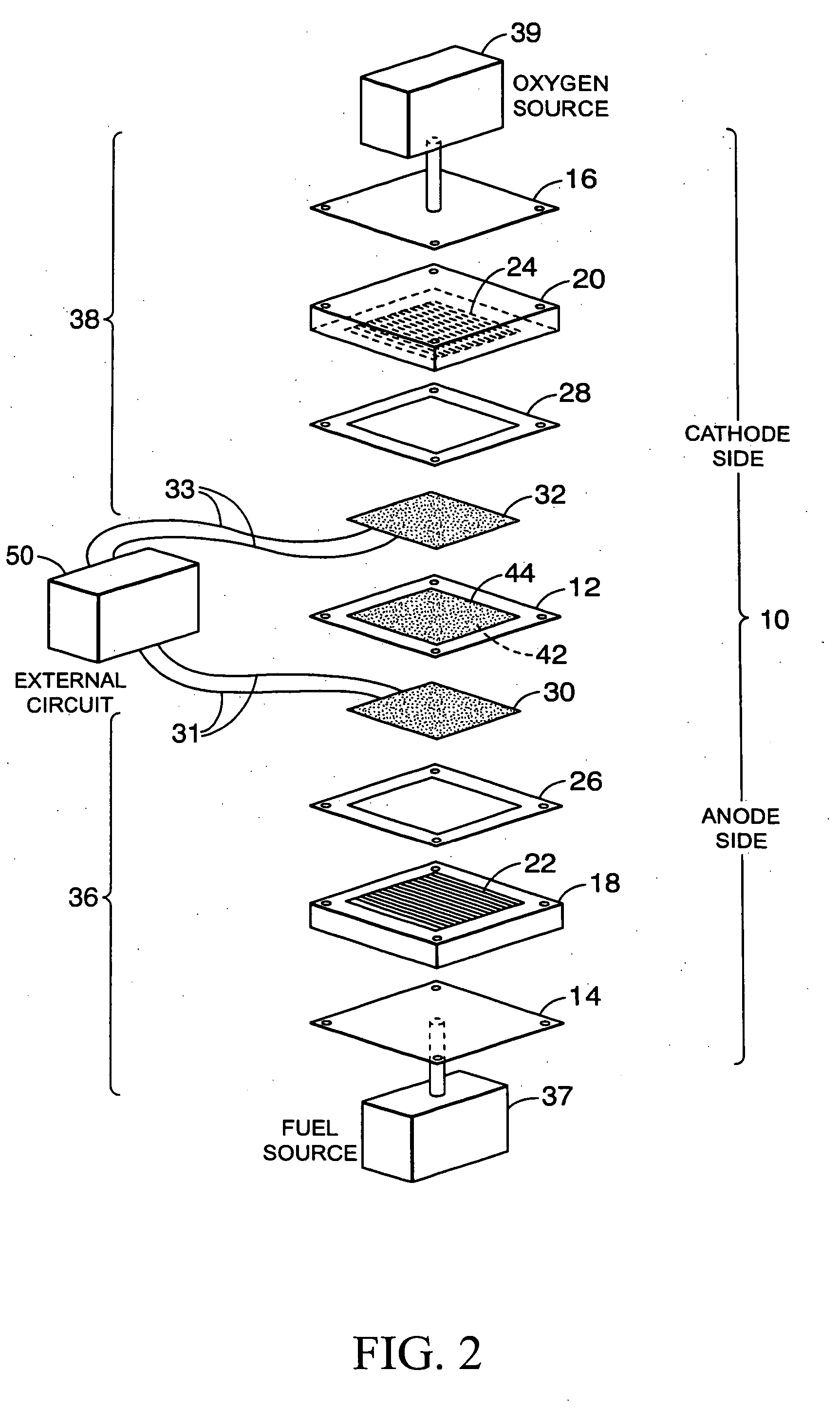Composite polymer electrolytes for proton exchange membrane fuel cells
- Summary
- Abstract
- Description
- Claims
- Application Information
AI Technical Summary
Benefits of technology
Problems solved by technology
Method used
Image
Examples
examples
[0064] The following describes composite membrane formulations and testing as a proton exchange membrane. The description, although not exhaustive, serves to familiarize the reader with composite membrane production methods in accordance with the principles of the present invention. Any of the previously disclosed inorganic cation exchange materials, silica-based materials, and proton conducting polymer-based materials may be incorporated into the invention.
[0065] Before testing, as part of a production method, the formulation involves adding a montmorillonite or modified montmorillonite (1.24 TL, Nanomer, Ill., USA) to different samples of sulfonated polyether ether ketone (SPEEK) to create membranes with 0, 3, 5, 7, 10 and 15 wt % loading of clay. SPEEK and clay mixtures were grounded to disperse the clay uniformly and aid in dissolution. Following grinding, the mixture of SPEEK and clay were dissolved in approximately 10 ml distilled N,N-dimethylformamide (DMF) by stirring for a...
PUM
| Property | Measurement | Unit |
|---|---|---|
| Electrical conductivity | aaaaa | aaaaa |
| Viscosity | aaaaa | aaaaa |
| Electrical conductor | aaaaa | aaaaa |
Abstract
Description
Claims
Application Information
 Login to View More
Login to View More - Generate Ideas
- Intellectual Property
- Life Sciences
- Materials
- Tech Scout
- Unparalleled Data Quality
- Higher Quality Content
- 60% Fewer Hallucinations
Browse by: Latest US Patents, China's latest patents, Technical Efficacy Thesaurus, Application Domain, Technology Topic, Popular Technical Reports.
© 2025 PatSnap. All rights reserved.Legal|Privacy policy|Modern Slavery Act Transparency Statement|Sitemap|About US| Contact US: help@patsnap.com



